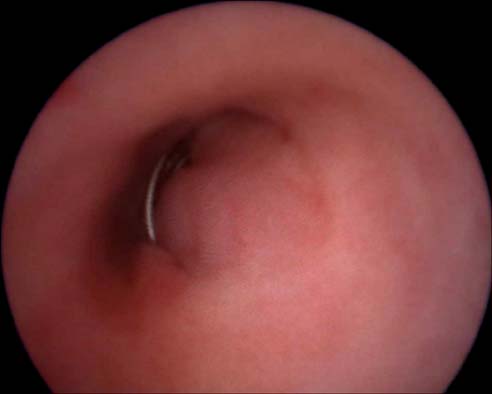Korean J Urol.
2013 Dec;54(12):851-857.
Early Experience With a Thermo-Expandable Stent (Memokath) for the Management of Recurrent Urethral Stricture
- Affiliations
-
- 1Department of Urology, Kyungpook National University School of Medicine, Daegu, Korea. dock97@hanmail.net
- 2Department of Urology, Daegu Fatima Hospital, Daegu, Korea.
Abstract
- PURPOSE
To report our early experience with thermo-expandable urethral stents (Memokath) for the management of recurrent urethral stricture and to assess the efficacy of urethral stents.
MATERIALS AND METHODS
Between March 2012 and February 2013, 13 patients with recurrent urethral stricture after several attempts with direct visual internal urethrotomy (DVIU) or failed urethroplasty underwent DVIU with thermally expandable, nickel-titanium alloy urethral stent (Memokath) insertion. Follow-up study time points were at 1, 3, 6, 9, and 12 months after stent insertion. Follow-up evaluation included uroflowmetry, retrograde urethrogram, plain radiography, and urinalysis.
RESULTS
The mean patient age was 47.7 years (range, 18 to 74 years). The mean urethral stricture length was 5.54 cm (range, 1 to 12 cm). There were six patients with bulbar, four patients with proximal penile, one patient with distal penile, and two patients with whole penile urethral strictures, respectively. The overall success rate was 69% (9/13) and the mean postoperative peak flow rate was 17.7 mL/s (range, 6 to 28 mL/s). Major complications occurred in four patients including one patient (7.7%) with urethrocutaneous fistula induced by the stent and three patients with urethral hyperplasia. The mean follow-up duration was 8.4 months.
CONCLUSIONS
Our initial clinical experience indicates that thermo-expandable stents can be another temporary management option for recurrent urethral stricture patients who are unfit for or refuse urethroplasty. Distal or whole penile urethral stricture can be factors predicting poor results.
Keyword
MeSH Terms
Figure
Reference
-
1. Santucci RA, Joyce GF, Wise M. Male urethral stricture disease. J Urol. 2007; 177:1667–1674.2. Choi SH, Lee YS, Choi NG, Kim HJ. Initial experience with endoscopic holmium: YAG laser urethrotomy for incomplete urethral stricture. Korean J Urol. 2009; 50:246–250.3. Lumen N, Hoebeke P, Willemsen P, De Troyer B, Pieters R, Oosterlinck W. Etiology of urethral stricture disease in the 21st century. J Urol. 2009; 182:983–987.4. Bhargava S, Chapple CR. Buccal mucosal urethroplasty: is it the new gold standard? BJU Int. 2004; 93:1191–1193.5. Bhargava S, Chapple CR, Bullock AJ, Layton C, MacNeil S. Tissue-engineered buccal mucosa for substitution urethroplasty. BJU Int. 2004; 93:807–811.6. Pansadoro V, Emiliozzi P. Internal urethrotomy in the management of anterior urethral strictures: long-term followup. J Urol. 1996; 156:73–75.7. Steenkamp JW, Heyns CF, de Kock ML. Internal urethrotomy versus dilation as treatment for male urethral strictures: a prospective, randomized comparison. J Urol. 1997; 157:98–101.8. Greenwell TJ, Castle C, Andrich DE, MacDonald JT, Nicol DL, Mundy AR. Repeat urethrotomy and dilation for the treatment of urethral stricture are neither clinically effective nor cost-effective. J Urol. 2004; 172:275–277.9. Heyns CF, Steenkamp JW, De Kock ML, Whitaker P. Treatment of male urethral strictures: is repeated dilation or internal urethrotomy useful? J Urol. 1998; 160:356–358.10. Bullock TL, Brandes SB. Adult anterior urethral strictures: a national practice patterns survey of board certified urologists in the United States. J Urol. 2007; 177:685–690.11. Andrich DE, Mundy AR. Urethral strictures and their surgical treatment. BJU Int. 2000; 86:571–580.12. Anger JT, Buckley JC, Santucci RA, Elliott SP, Saigal CS. Urologic Diseases in America Project. Trends in stricture management among male Medicare beneficiaries: underuse of urethroplasty? Urology. 2011; 77:481–485.13. Abdallah MM, Selim M, Abdelbakey T. Thermo-expandable metallic urethral stents for managing recurrent bulbar urethral strictures: to use or not? Arab J Urol. 2013; 11:85–90.14. Chiou RK, Matamoros A, Anderson JC, Taylor RJ. Changing concepts of urethral stricture management. I: Assessment of urethral stricture disease. Nebr Med J. 1996; 81:282–286.15. Webster GD, Koefoot RB, Sihelnik SA. Urethroplasty management in 100 cases of urethral stricture: a rationale for procedure selection. J Urol. 1985; 134:892–898.16. Fabian KM. The intra-prostatic "partial catheter" (urological spiral) (author's transl). Urologe A. 1980; 19:236–238.17. Soni BM, Vaidyanatham S, Krishnan KR. Use of Memokath, a second generation urethral stent for relief of urinary retention in male spinal cord injured patients. Paraplegia. 1994; 32:480–488.18. Perry MJ, Roodhouse AJ, Gidlow AB, Spicer TG, Ellis BW. Thermo-expandable intraprostatic stents in bladder outlet obstruction: an 8-year study. BJU Int. 2002; 90:216–223.19. Jordan GH, Wessells H, Secrest C, Squadrito JF Jr, McAninch JW, Levine L, et al. Effect of a temporary thermo-expandable stent on urethral patency after dilation or internal urethrotomy for recurrent bulbar urethral stricture: results from a 1-year randomized trial. J Urol. 2013; 190:130–136.20. McFarlane IP, Foley SJ, Shah PJ. Long-term outcome of permanent urethral stents in the treatment of detrusor-sphincter dyssynergia. Br J Urol. 1996; 78:729–732.21. Hamid R, Arya M, Patel HR, Shah PJ. The mesh wallstent in the treatment of detrusor external sphincter dyssynergia in men with spinal cord injury: a 12-year follow-up. BJU Int. 2003; 91:51–53.22. Low AI, McRae PJ. Use of the Memokath for detrusor-sphincter dyssynergia after spinal cord injury: a cautionary tale. Spinal Cord. 1998; 36:39–44.23. Mehta SS, Tophill PR. Memokath stents for the treatment of detrusor sphincter dyssynergia (DSD) in men with spinal cord injury: the Princess Royal Spinal Injuries Unit 10-year experience. Spinal Cord. 2006; 44:1–6.24. Badlani GH, Press SM, Defalco A, Oesterling JE, Smith AD. Urolume endourethral prosthesis for the treatment of urethral stricture disease: long-term results of the North American Multicenter UroLume Trial. Urology. 1995; 45:846–856.25. Eisenberg ML, Elliott SP, McAninch JW. Preservation of lower urinary tract function in posterior urethral stenosis: selection of appropriate patients for urethral stents. J Urol. 2007; 178:2456–2460.
- Full Text Links
- Actions
-
Cited
- CITED
-
- Close
- Share
- Similar articles
-
- Removal of Migrated Thermo-Expandable Ureteral Stent (Memokath): Open Procedure 1 Case
- A Case of Obliteration of the Urethral Lumen after Wallstent Implantation
- Three cases of the expandable urethral metallic stent in urethral obstruction
- Treatment of Urethral Obstruction after Wallstent Implantation in Traumatic Urethral Stricture
- Experimental study with modified gianturco expandable stent in the dog urethra





